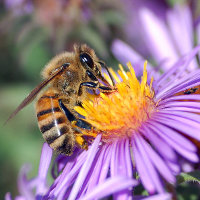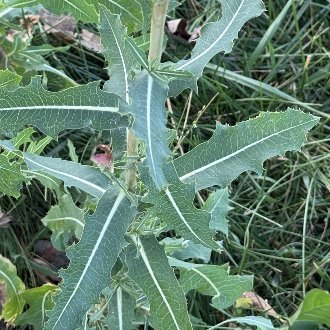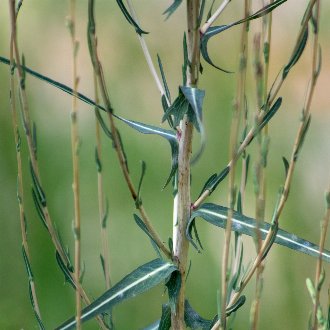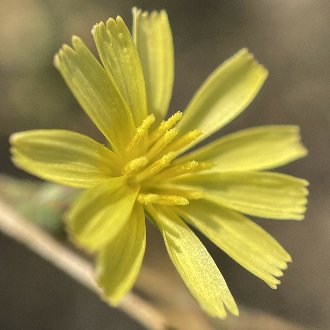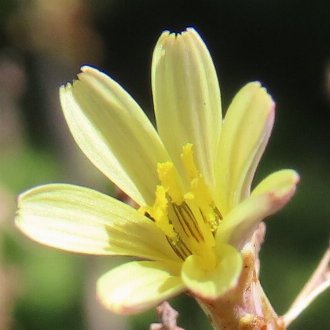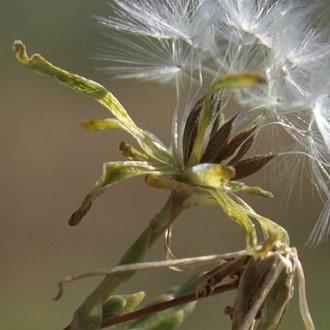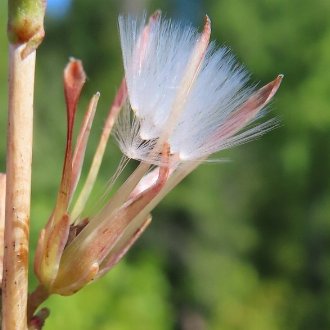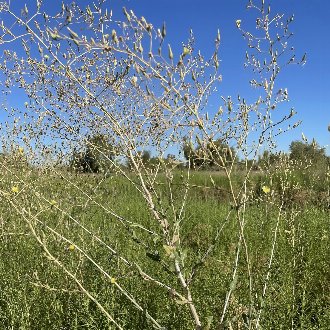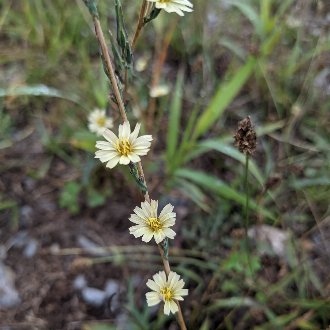Prickly Lettuce vs Willowleaf Lettuce
This guide is under construction and has not been published yet. It may have errors. When in doubt, double-check other sources for definitive ID.These two introduced species are easily confused; both look more similar to each other than to any native lettuces, and both are more common in disturbed anthropogenic habitats. They can usually be easily distinguished by leaf shape and they have numerous other differences. L. serriola has a much more extensive range. L. saligna is less common and has a more restricted range; it is more restricted to barren habitats with less vegetation, and may be more restricted to soils of near-neutral pH.
Prickly Lettuce (Lactuca serriola) | Willowleaf Lettuce (Lactuca saligna) |
An annual native to Europe, Asia, and North Africa, introduced to North America where it is often considered invasive. | An annual native to Europe, Western Asia, and North Africa, introduced in parts of North America. |
Leaves are much broader relative to their width, usually described as oblong, obovate, or spatulate. Photo © chrischalfant, CC BY 4.0. | Leaves are much narrower relative to their length, usually described as lanceolate, linear, or filiform. Photo © Ian Wolfe, Public Domain. |
Flowers usually have 12-20 rays. Photo © Engers, CC BY 4.0. | Flowers usually have 6-12 rays, rarely as many as 20 or more. Photo © Ken Clark, CC BY 4.0. |
Phyllaries (bracts underneath each flowerhead) usually curve back by the time the seeds mature, leading the involucre (cluster of bracts) to open up like a flower. Photo © Jim Morefield, CC BY 4.0. | Phyllaries are usually still pointing straight ahead, not curving back, by the time the seeds mature, leading the involucre to stay mostly-closed, only cracking open slightly. Photo © Ken Clark, CC BY 4.0. |
Inflorescence is organized more like a panicle, with many branches. Photo © Amelia Tauber, CC BY 4.0. | Inflorescence is organized more like a raceme or spike, with flowers mostly in a line along a single stem or small number of branches. Photo © Matthew Gerke, CC BY 4.0. |
References & External Resources
These short lists show only links helpful for ID. For a complete list of references and resources also covering other aspects of ecology, visit the links section of the full article on each plant, which is the first entry here.

